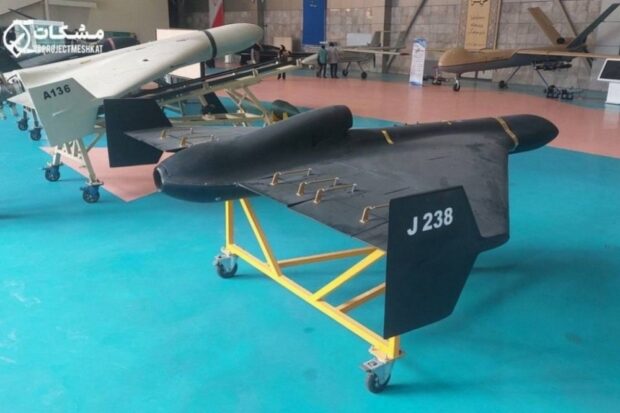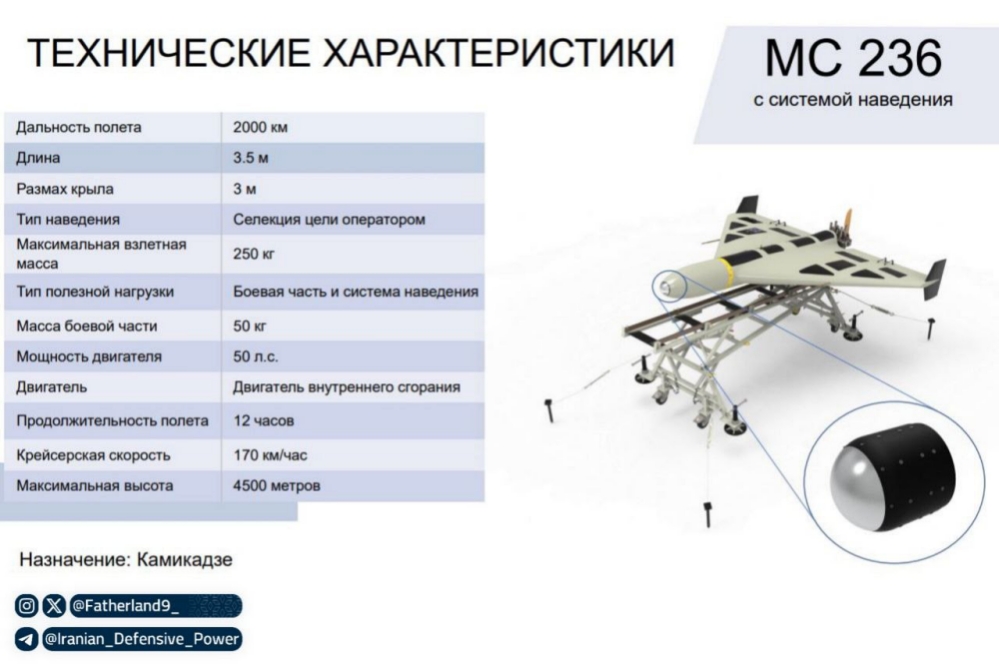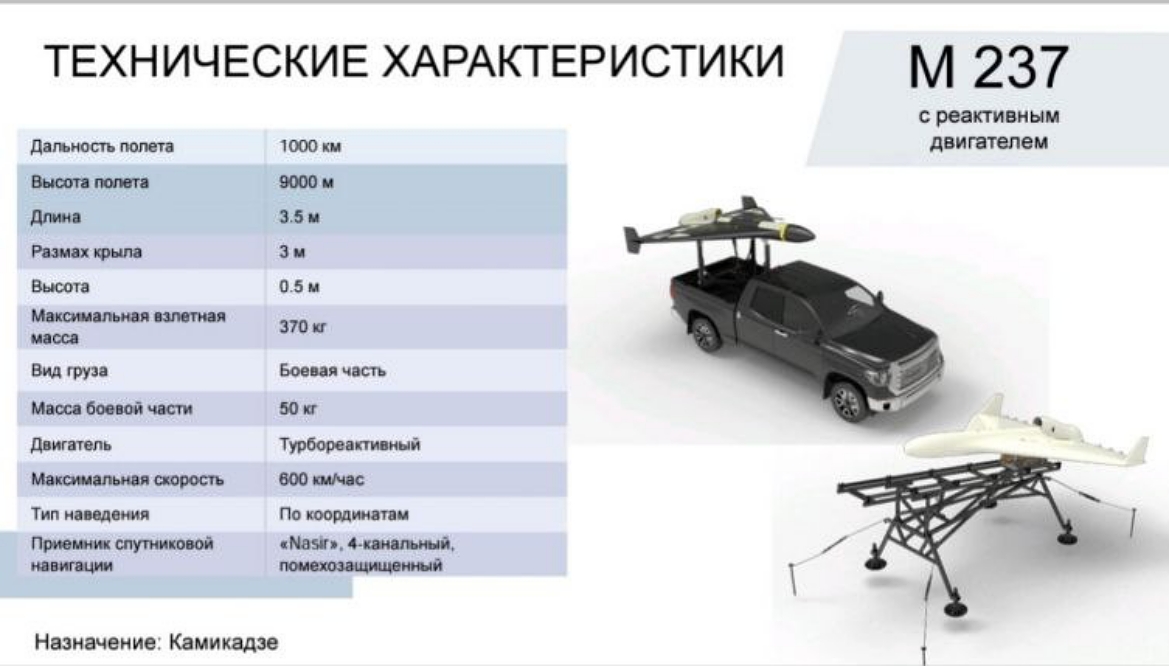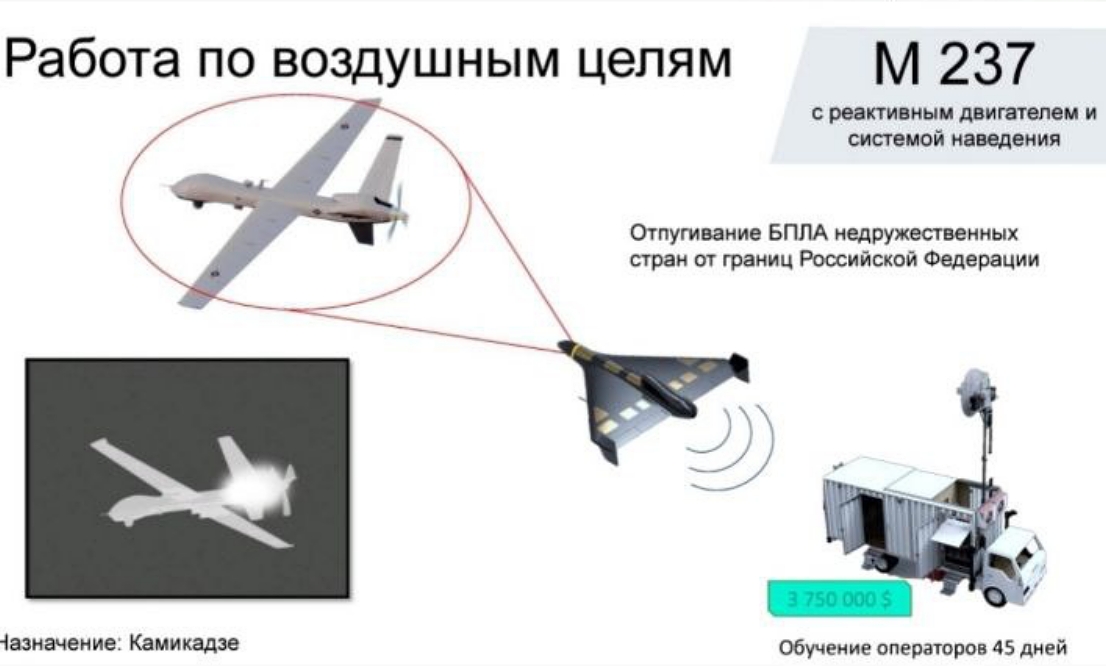Russian industries are already promoting Shahed as their development and exhibited it at World Defense Show 2024, an annual event currently underway in Saudi Arabia. Tank history expert Andrii Tarasenko (btvt.info) drew attention to the “Russian” weapon on display and the brochures detailing its specifications.
Awhile ago, the Defense Intelligence of Ukraine revealed the production volumes of Shahed-136 loitering munitions in Russia and the set deadline for full localization of this product by the Russia defense industry. As of today, they have at least two working assembly lines making these attack drones but the only component they are capable of producing fully on their own is the airframe: the capacity is 330-350 units a month. The Russians expect to achieve a full cycle of local manufacture by 2026.
In Russian promos, the loitering munition is called MS 236 (Shahed-136) attack drone, according to the materials it has an electro-optical guidance system (“target selection by the operator”) and an internal combustion engine. The declared flight range is up to 2000 km, and the maximum take-off weight is 250 kg, including the warhead of 50 kg.
Side note, Defense Express previously reported that Russians have changed the Shahed-136 warhead three times already. Other specs are: cruising speed is 170 km/h, flight duration is 12 hours, and maximum altitude is 4,500 m
From here on start interesting nuances: the purpose of the drone is defined as “kamikaze,” and the Russians visualize two scenarios of its use. The first is “deterring UAVs of unfriendly countries from the borders of the Russian federation.” Exactly how this “deterrence” function was implemented in the drone’s capabilities remains a mystery.
The pictures show an MS 237 shooting down a hostile MQ-9 Reaper and its image in the thermal spectrum, apparently indicating a capability to initiate hit-to-kill interception by utilizing an alternative heat seeker to lock on the engines of enemy drones.
The second scenario of use is to reveal the location of enemy air defense systems. As stated, the drone is loud, has a high speed, and “looks like a fighter jet in sound and shape,” so it will be able to decoy the enemy air defense systems to reveal their positions and fire an interceptor — an anti-aircraft missile worth millions of dollars each in the case of the Patriot system and alike, compared to the much more affordable Shahed drone. Although the actual price for a Shahed is a topic of debate, the estimates vary from tens to hundreds of thousands of dollars apiece.
As for the Russians, they put a price tag of $1.4 million per MS 237 (Shahed-238) and $3.75 million for a mobile control point, which can hardly be called “cheap.” This fact essentially nullifies the whole concept of such drones: they must be as cheap as possible in the first place.
That is not to mention, it’s not always an expensive missile that is necessarily spent to take down this decoy, as clearly evident in Ukraine, where such drones get shot down by machine guns — and recently, just jammed to fall by EW systems without spending any ammo.
Source: Defense Express




